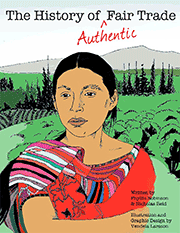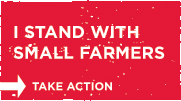“For decades smallholder farmers and food justice advocates have used fair trade to build collective power by combining responsible consumerism and political awareness with a fairer and more environmentally sustainable market. Changes in fair trade certification enabled large corporations to enter this market, leading to a dramatic increase in sales—now topping $5 billion globally. Unfortunately, this growth has been accompanied by lower economic returns to farmers and disturbing social and political trends that threaten the future of the movement and suggest that fair trade is not as fair as it used to be.”
Click here to read the rest of this article written by Christopher M. Bacon, Kaelin Holland, and Eric S. George published by Food First.



I don’t understand. I thought “fair trade” signified that the farmers were getting just wages for their work. If larger “coffee plantations” are a part of the fair trade movement, wouldn’t this mean that they, too, would be paying their workers a fair wage? What are the specifics to the “fair trade” label? (like workers/farmers get at least twice the minimum wage or poverty level in a country?) I guess I haven’t thought about how that would be determined, but assumed there was something…..
nevermind those comments…… I needed to read the article!